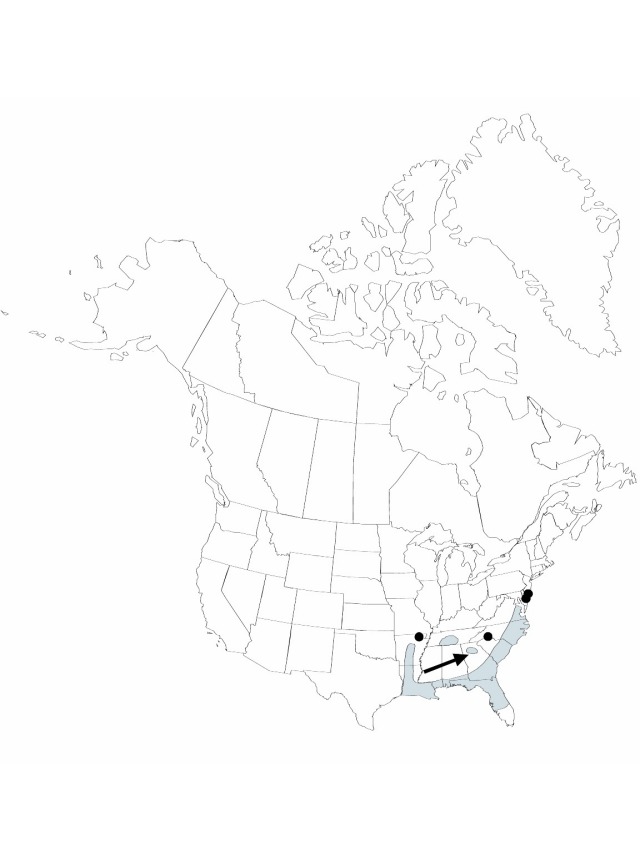Difference between revisions of "Juncus elliottii"
Fl. South. U.S. 494. 1860.
FNA>Volume Importer |
FNA>Volume Importer |
Revision as of 19:01, 24 September 2019
Herbs, perennial, cespitose, 3–9 dm. Roots often with terminal tubers. Culms erect, terete, 1–3 mm diam., smooth. Cataphylls 1, maroon to brown, apex acute. Leaves: basal 1–3, cauline 1–2; auricles 0.5–2 mm, apex rounded, scarious; blade green or maroon, compressed, 2–16 cm × 1–2 mm. , with faint ringlike bands at position of septa. Inflorescences terminal panicles of 40–100(–200) heads, 4–16 cm, branches ascending to spreading; primary bract erect to ascending; heads 2–10-flowered, hemispheric to obpyramidal, 0.3–0.5 mm diam. Flowers: tepals straw-colored, lanceolate, apex acuminate; outer tepals (2.2–)2.6–2.9 mm; inner tepals (1.8–)2.4–2.8; stamens 3, anthers 2/3 to equal filament length. Capsules exserted, chestnut brown, 1-locular, narrowly obpyriform to narrowly ovoid, 2.4–2.9 mm, apex acute, valves separating at dehiscence. Seeds ellipsoid, 0.3–0.5 mm, not tailed; body clearly yellow-brown. 2n = 40.
Phenology: Fruiting summer.
Habitat: Wet sands, peaty sands, or peat, exposed shores of ponds and lakes, depressions in savannas and flatwoods, moist to wet, much disturbed clearings, roadsides and ditches
Elevation: 0–700 m
Distribution

Ala., Ark., Del., Fla., Ga., La., Miss., N.J., N.C., S.C., Tenn., Tex., Va.
Discussion
Juncus elliottii has tubers at the ends of the roots.
Selected References
None.